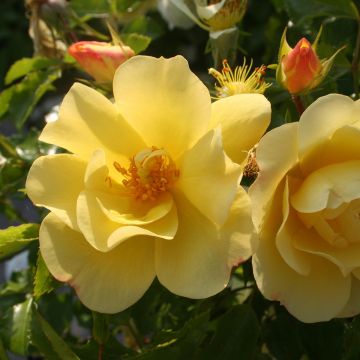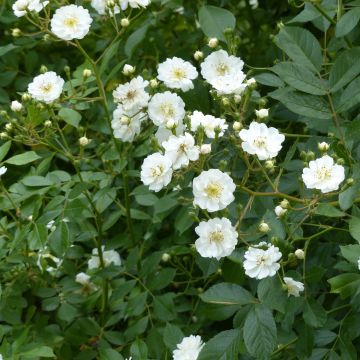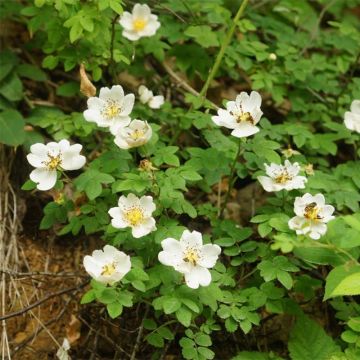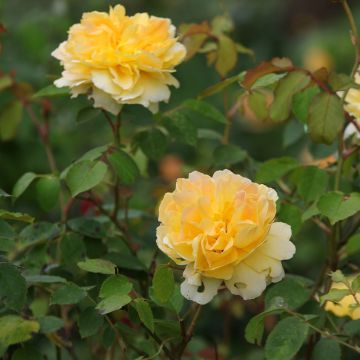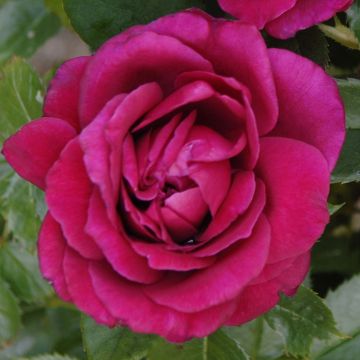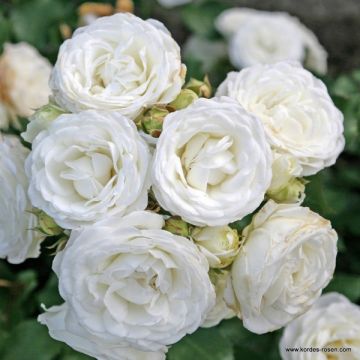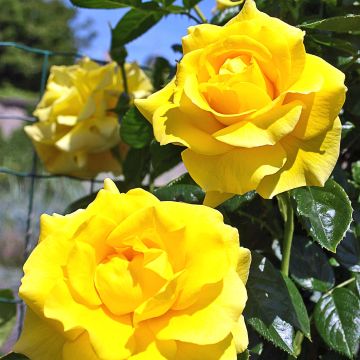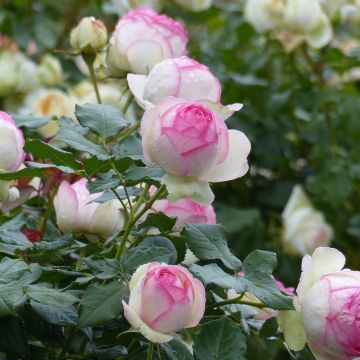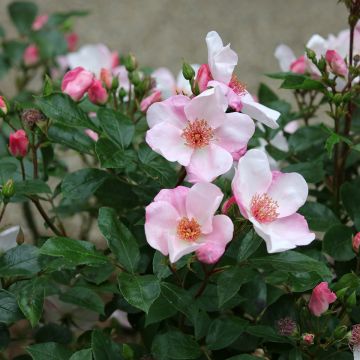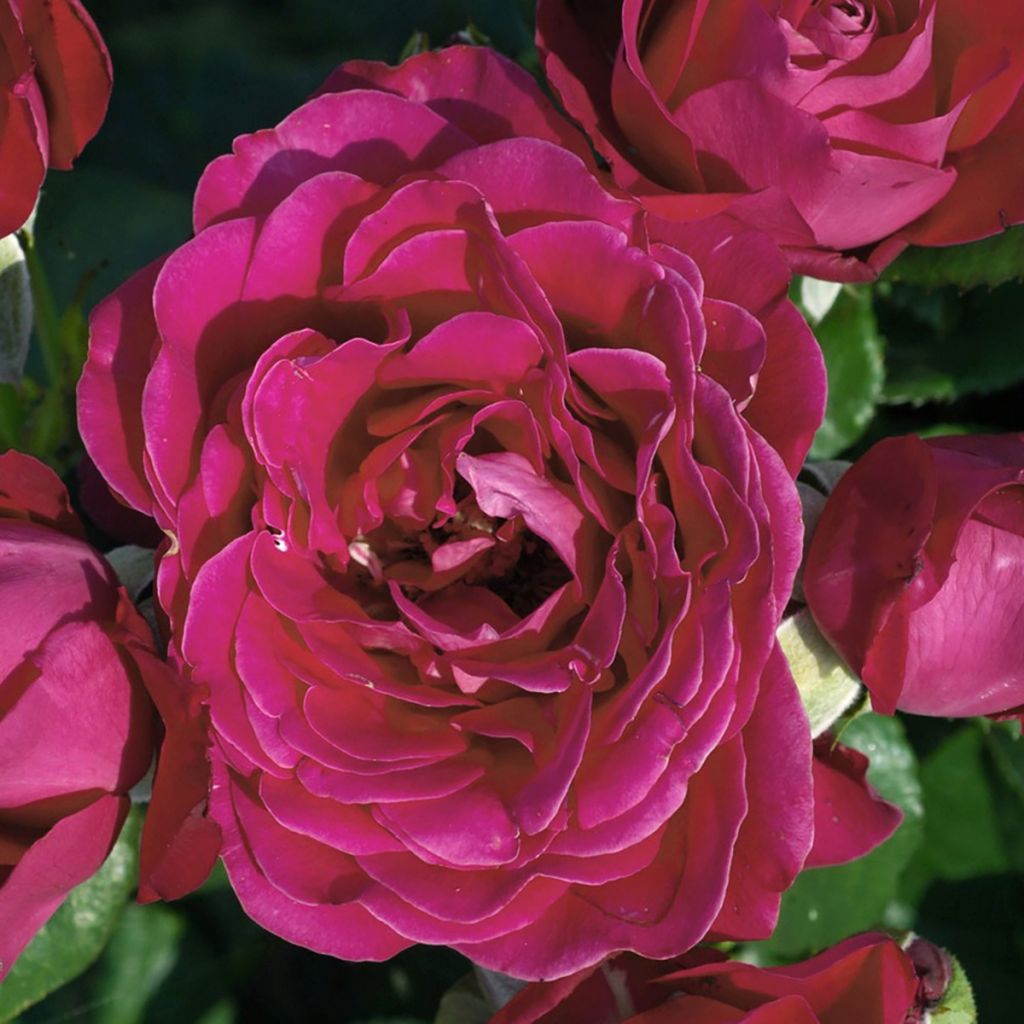

Rosa 'Dominica' - Standard Rose


Rosa 'Dominica' - Standard Rose
Rosa 'Dominica' - Standard Rose
Rosa Dominica® Intercomdoor
Intercomdoor
Thanks to Laeticia from the order preparation team and W from the shipping service, the received rose bush is healthy. Planted in the ground, I am looking forward to seeing its progress... Note: received with the variety label (essential for identifying the rose bush in all seasons).
Thierry, 17/06/2021
This item cannot be shipped to the selected country
Oversize package delivery charge from €6.90
Oversize package delivery charge from €6.90
Delivery to Corse prohibited
More information
Schedule delivery date,
and select date in basket
This plant carries a 24 months recovery warranty
More information
We guarantee the quality of our plants for a full growing cycle, and will replace at our expense any plant that fails to recover under normal climatic and planting conditions.
Oversize package: home delivery by special carrier from €6.90 per order..
Express home delivery from €8.90.
Oversize package: home delivery by special carrier from €6.90 per order..
Express home delivery from €8.90.
Delivery to Corse prohibited: UE law prohibits the import of this plant from mainland France to Corse as part of the fight against Xylella fastidiosa. Please accept our sincere apologies.
More information

Does this plant fit my garden?
Set up your Plantfit profile →
Description
The Standard Rose 'Dominica' Intercomdoor is a beautiful and easy-to-grow plant. Its healthy and vigorous vegetation is adorned with large, fully double roses that change from ruby red to fuchsia pink when fully mature, with a light scent of tea rose. They bloom from summer to the first frost on a dark green decorative foliage highly resistant to diseases. With its magnificent tree-like silhouette and brilliant flowering, it deserves a prime spot in the garden or terrace. Its roses, carried on long stems, are also perfect for creating bouquets.
Standard roses are created by grafting a particular variety, such as the bush rose Dominica, onto an upright stem that belongs to a different kind of rose, like Rosa canina, R. laxa or R. multiflora. This graft is made at the top of the stem. In regions with very cold weather, protecting the rootstock during winter may be necessary.
The 'Dominica' Standard Rose belongs to the complex family of modern Hybrid Teas, also known as large-flowered roses. It is a creation of Interplant (NL) dating back to before 2008. Grafted as a standard rose, this bush rose has a characteristic habit, with a slender and upright "trunk" carrying a semi-globular, well-branched crown. At maturity, the plant can reach 1.50 m (5ft) in height and 70-80 cm (28-32in) in spread. The foliage is dark green and relatively disease-resistant. However, it may be susceptible to Black Spot (a fungal disease) in humid and confined conditions. The foliage colour perfectly complements that of the flowers. This rose blooms from June to October, abundantly and consistently, as long as it is not lacking in water or nutrients. Its large flowers, measuring 10 to 12 cm (4 to 5in) in diameter, are solitary or gathered in small clusters, carried on long and sturdy thorny stems. Each flower has 45 petals that transition from intense red to fuchsia pink. Their fragrance, light and fresh, reminds one of tea roses. The plant loses its leaves in winter.
This 'Dominica' Standard Rose, with its elegant habit, vibrant roses, and gentle fragrance, is ideal as the centrepiece of a bed of delicate perennials along a pathway near a terrace, as a standalone feature in a small, well-kept garden, or in a large pot on the balcony. Its red color is easy to pair with all sorts of flowers in the garden. For example, penstemons, chamomiles, perennial salvias, catmints, or large baby's breath can be planted alongside it to lighten its sometimes perceived artificial appearance. A ground cover composed of silverweed or lady's mantle will perfectly enhance its beauty. Its cut flowers, with good longevity, are naturally perfect for bouquets.
Report an error about the product description
Plant habit
Flowering
Foliage
Botanical data
Rosa
Dominica® Intercomdoor
Rosaceae
Intercomdoor
Cultivar or hybrid
Other Tree Roses - Stem Roses
Planting and care
To plant your standard rose, choose a sunny or lightly shaded spot with well-worked soil that is not too heavy and has enough nutrients. Avoid planting in poor and excessively dry soils. Prepare the soil by crumbling it and adding an amendment, such as blood, fish and bone, at the bottom of the planting hole. After planting, water abundantly to remove air pockets and continue to water regularly for a few weeks to help the roots establish.
If you live in an area with very cold winters, protect the graft of standard roses (the "trunk") by wrapping it with a thick winter cover.
Pruning modern repeat flowering roses is important for flowering and should be done in three stages:
1. Regular maintenance pruning: During the season, regularly shorten the flowering branches and remove faded flowers along with their stem, leaving 2 or 3 leaves to encourage repeat flowering.
2. Preparatory autumn pruning: Lightly prune in preparation for the 'main' spring pruning. Note: This is not recommended in regions with cold winters as this could weaken the bush.
3. Spring pruning: In February-March, when the buds have become shoots 2 to 3 cm (1in) long, prune the young, strong branches to one-quarter of their length.
When pruning, always aim to remove dead wood, diseased branches, and weak shoots while opening up the centre of the bush. Retain the most vigorous branches, generally 3 to 6 well-positioned, to maintain an attractive habit. Always prune at a slant ½ cm or 1 cm (0in) above an outward-facing bud.
Roses may develop unsightly spots at the end of summer, but this is a natural occurrence and doesn't harm the rose's growth.
Planting period
Intended location
Care
-
, onOrder confirmed
Reply from on Promesse de fleurs
Roses by purpose
Haven't found what you were looking for?
Hardiness is the lowest winter temperature a plant can endure without suffering serious damage or even dying. However, hardiness is affected by location (a sheltered area, such as a patio), protection (winter cover) and soil type (hardiness is improved by well-drained soil).

Photo Sharing Terms & Conditions
In order to encourage gardeners to interact and share their experiences, Promesse de fleurs offers various media enabling content to be uploaded onto its Site - in particular via the ‘Photo sharing’ module.
The User agrees to refrain from:
- Posting any content that is illegal, prejudicial, insulting, racist, inciteful to hatred, revisionist, contrary to public decency, that infringes on privacy or on the privacy rights of third parties, in particular the publicity rights of persons and goods, intellectual property rights, or the right to privacy.
- Submitting content on behalf of a third party;
- Impersonate the identity of a third party and/or publish any personal information about a third party;
In general, the User undertakes to refrain from any unethical behaviour.
All Content (in particular text, comments, files, images, photos, videos, creative works, etc.), which may be subject to property or intellectual property rights, image or other private rights, shall remain the property of the User, subject to the limited rights granted by the terms of the licence granted by Promesse de fleurs as stated below. Users are at liberty to publish or not to publish such Content on the Site, notably via the ‘Photo Sharing’ facility, and accept that this Content shall be made public and freely accessible, notably on the Internet.
Users further acknowledge, undertake to have ,and guarantee that they hold all necessary rights and permissions to publish such material on the Site, in particular with regard to the legislation in force pertaining to any privacy, property, intellectual property, image, or contractual rights, or rights of any other nature. By publishing such Content on the Site, Users acknowledge accepting full liability as publishers of the Content within the meaning of the law, and grant Promesse de fleurs, free of charge, an inclusive, worldwide licence for the said Content for the entire duration of its publication, including all reproduction, representation, up/downloading, displaying, performing, transmission, and storage rights.
Users also grant permission for their name to be linked to the Content and accept that this link may not always be made available.
By engaging in posting material, Users consent to their Content becoming automatically accessible on the Internet, in particular on other sites and/or blogs and/or web pages of the Promesse de fleurs site, including in particular social pages and the Promesse de fleurs catalogue.
Users may secure the removal of entrusted content free of charge by issuing a simple request via our contact form.
The flowering period indicated on our website applies to countries and regions located in USDA zone 8 (France, the United Kingdom, Ireland, the Netherlands, etc.)
It will vary according to where you live:
- In zones 9 to 10 (Italy, Spain, Greece, etc.), flowering will occur about 2 to 4 weeks earlier.
- In zones 6 to 7 (Germany, Poland, Slovenia, and lower mountainous regions), flowering will be delayed by 2 to 3 weeks.
- In zone 5 (Central Europe, Scandinavia), blooming will be delayed by 3 to 5 weeks.
In temperate climates, pruning of spring-flowering shrubs (forsythia, spireas, etc.) should be done just after flowering.
Pruning of summer-flowering shrubs (Indian Lilac, Perovskia, etc.) can be done in winter or spring.
In cold regions as well as with frost-sensitive plants, avoid pruning too early when severe frosts may still occur.
The planting period indicated on our website applies to countries and regions located in USDA zone 8 (France, United Kingdom, Ireland, Netherlands).
It will vary according to where you live:
- In Mediterranean zones (Marseille, Madrid, Milan, etc.), autumn and winter are the best planting periods.
- In continental zones (Strasbourg, Munich, Vienna, etc.), delay planting by 2 to 3 weeks in spring and bring it forward by 2 to 4 weeks in autumn.
- In mountainous regions (the Alps, Pyrenees, Carpathians, etc.), it is best to plant in late spring (May-June) or late summer (August-September).
The harvesting period indicated on our website applies to countries and regions in USDA zone 8 (France, England, Ireland, the Netherlands).
In colder areas (Scandinavia, Poland, Austria...) fruit and vegetable harvests are likely to be delayed by 3-4 weeks.
In warmer areas (Italy, Spain, Greece, etc.), harvesting will probably take place earlier, depending on weather conditions.
The sowing periods indicated on our website apply to countries and regions within USDA Zone 8 (France, UK, Ireland, Netherlands).
In colder areas (Scandinavia, Poland, Austria...), delay any outdoor sowing by 3-4 weeks, or sow under glass.
In warmer climes (Italy, Spain, Greece, etc.), bring outdoor sowing forward by a few weeks.





































